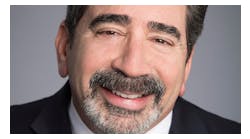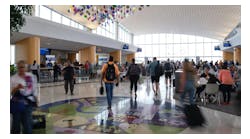Louis Smith has seen the airline industry when it was flush with too many pilots. He's seen it when the airlines were hiring left and right.
Today he sees an industry that faces a looming shortage of pilots. As the post-9/11 pilot furloughs dissipate, growing demand will force airlines - particularly the smaller regional carriers - to scramble to find enough qualified pilots in coming years, he warns.
Mr. Smith, at Dallas/Fort Worth International Airport on Friday for a pilot job fair sponsored by his company, FLTops .com, cited a regional carrier that had a 100 percent pilot-turnover rate last year - through the year it hired 200 pilots to keep the airline staffed at a steady 200.
The Dallas Morning News talked with Mr. Smith, FLTops .com president and a former Northwest Airlines Inc. pilot, about the pilot supply, what steps airlines will have to take to keep enough qualified applicants, and other issues.
What is the situation with pilot hiring today?
Right now, about 90 percent of the pilots on furlough are American Airlines pilots. American and ATA [Airlines Inc.] are the only two major airlines with pilots on furlough as of the end of this month. That's a radical change from what it was a couple of years ago.
At its peak, how many pilots were on furlough earlier in this decade?
We had over 10,000 pilots on furlough. After 9/11, it was an avalanche. Normally, the business has cycles, and every 10 years it peaks. But this was sort of an avalanche. We're just now recovering. They're starting to make money, and they're starting to turn it around, it looks like.
Do we have a shortage of pilots?
For the major airlines, they don't have a shortage yet. Their main sources are the regional carriers' jet pilots. Over the next 12 years, we see about 50,000 pilots being hired by the majors because of retirement and growth. A lot of those pilots are going to come from the regional airline jet sector, and that's only 20,000 pilots. That's a real problem for the industry.
There's no shortage among the majors right now, but it's almost impossible now for a regional carrier's HR person to find enough people to handle the turnover and any kind of growth that's going on at that company.
Who should be worried about getting enough pilots, say, for the next few years?
These regional airlines are feeding them [the major carriers] their passengers again. It could cause disruptions of schedule. If you can't get to the hub on the RJ [regional jet], you're not going to make your flight to Paris.
The major airlines have to be concerned about this themselves because they've developed this system of feeder carriers by separate corporations, separate carriers, separate unions, separate contracts, and they have to basically live with the consequences of what they set up, and it's going to be difficult.
The industry has to be certain that this doesn't turn into a safety issue. They've got to make sure that no matter what, the pilots have to pass the grade, they have to pass the test, they have to be qualified. Even if they're inexperienced, they still can be trained to be very competent, like the military that in many cases will have pilots with 300 hours in the right seat of a large jet.
It's going to have to go that way probably, at least for a while, for the regional airlines. They'll have to have low-time pilots. But they have to make sure the training is adequate.
If they hire pilots with less time flying, will that mean the airlines will have to spend more time and money training them?
You're going to have more washouts. You're going to have extended training. If the industry sticks to safety standards, they'll have to have a higher percentage of washouts.
The primary source of pilots now is civilian. If you go back to the '70s, the major airlines were getting all their pilots from the military. At least 80 percent were military. So the military had to adapt and change to address this major attrition, which was affecting national security. ...
They extended the commitment to 10 years if you went into the military, and they were also offering bonuses and convinced Congress to pay more money to stop the attrition. It made a big difference for the military. They could afford to make these changes to address this problem.
But the regional carriers may not be able to afford to make the changes the military did. They can't spend $1 million training a pilot like the military does, $2 million now, I guess, to train a military pilot.
Should the newer, lower-cost airlines worry that their pilots will return to their original carriers when recalled from furlough?
It depends on the situation at their current carrier. If their current airline's stock collapses and they fear a loss of job security, if they're concerned that they'll lose their job because the company may get into a problem, they'll probably go back to the mainline carrier. ...
For the mainline carriers, you see the profits coming in now, which make them a lot more strong. They've got more cash. Frankly, in this business, it's just a race to the next recession and to see who can get there with the most cash.
Pilots see that, and they'll go where there's the most job security. What good is $200,000 a year if it's only for three weeks? Exactly. They will move back to the major airline ... depending on the situation where they are.
This is the first time in the past five years where the LCCs [low-cost carriers] are going to have to compete with the mainline carriers for labor, for people.





